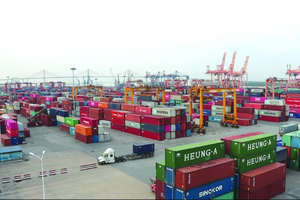
The anticipated rise in farm and food prices, especially for chicken, sugar, tapioca products and pineapples, as well as Thailand's strict safety and supervisory measures to prevent the spread of the virus and food contamination, are factors in the food export prediction, according to the Board of Trade, the National Food Institute and the Federation of Thai Industries (FTI).
FTI president Anong Paijiprapapon said food exports tallied THB980 billion last year, down 4.1 percent from the previous year, with shipments in dollar terms equivalent to US$31.3 billion, down 5.1 percent.
Lower exports led Thailand's share of the world food market to drop to 2.32 percent last year from 2.49 percent in 2019. Thailand's food exporter ranking in the world fell to 13th from 11th the year before.
According to Anong, Thailand’s food exports only grew to China, the US and Oceania, with outbound shipments to China amounting to THB180 billion, up 18.1 percent, with those to the US up 12.2 percent to THB119 billion, and Oceania up 1.7 percent to THB33.1 billion.
Exports to other markets, particularly Africa, ASEAN, Europe, the Middle East and North Africa, and the United Kingdom all fell, she said.
China is Thailand's top food export market, accounting for 18.3 percent of the total, followed by CLMV (Cambodia, Laos, Myanmar and Vietnam) at 13.9 percent, and Japan at 12.7 percent.
Anong said apart from the pandemic impact, food exports last year also struggled with the stubborn baht strength, a container shortage and higher transport costs.
























